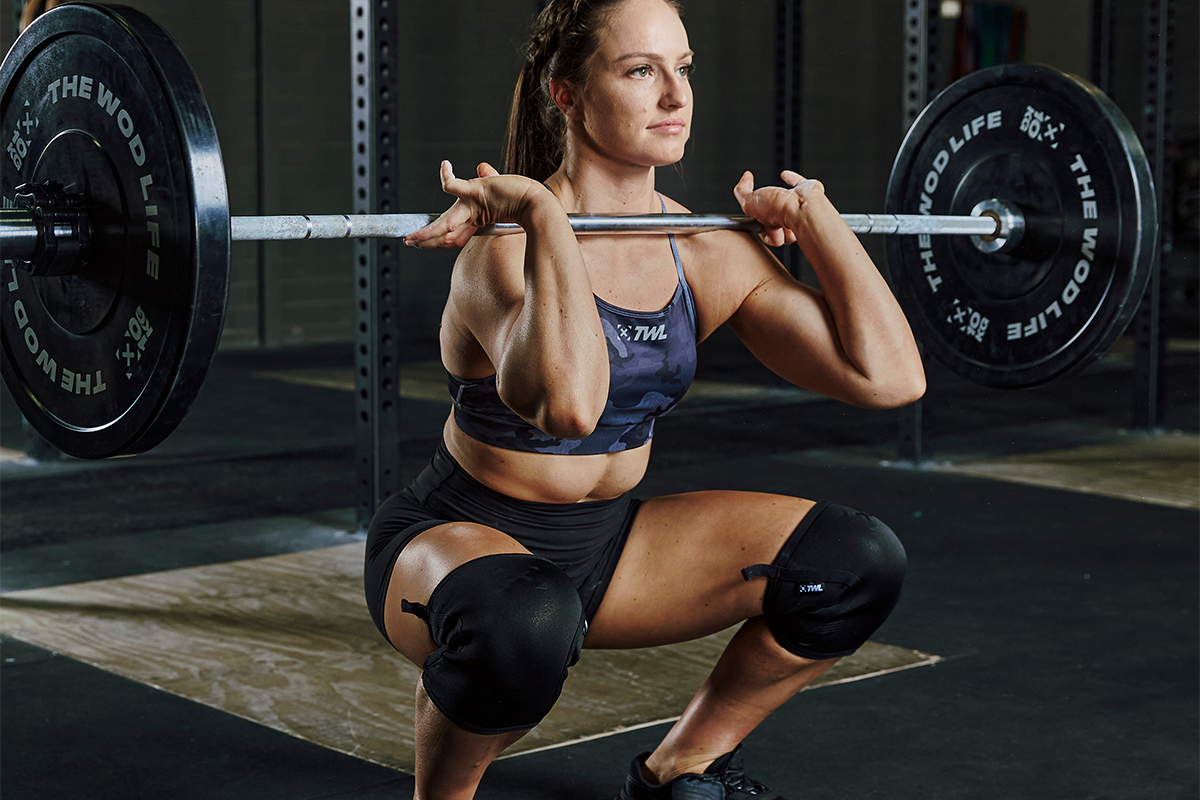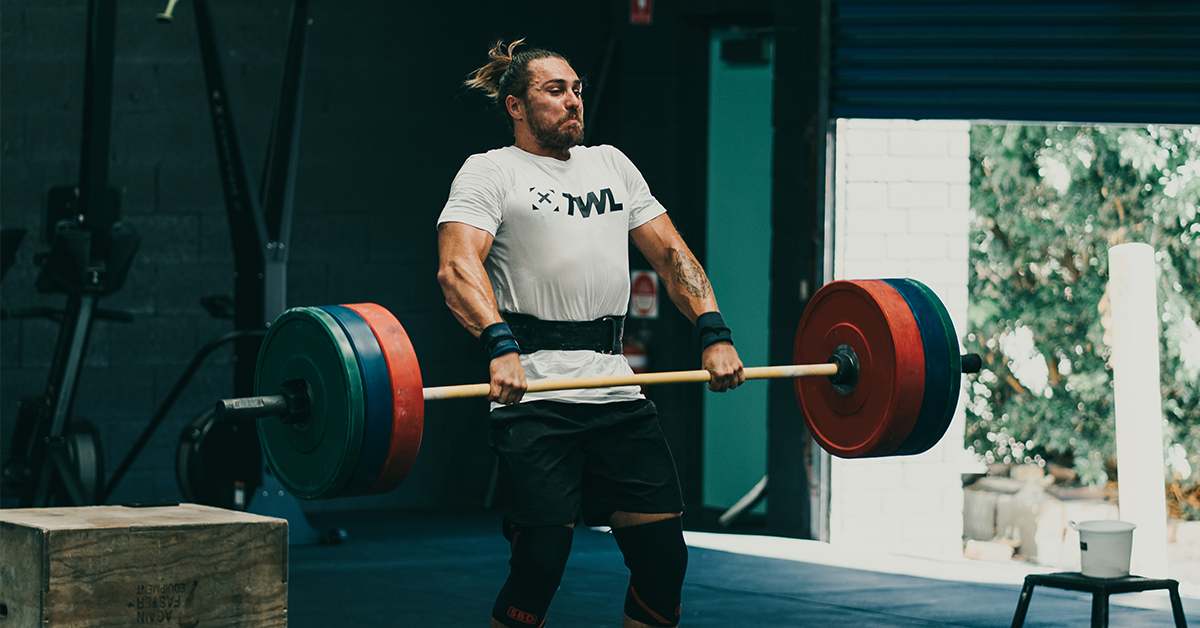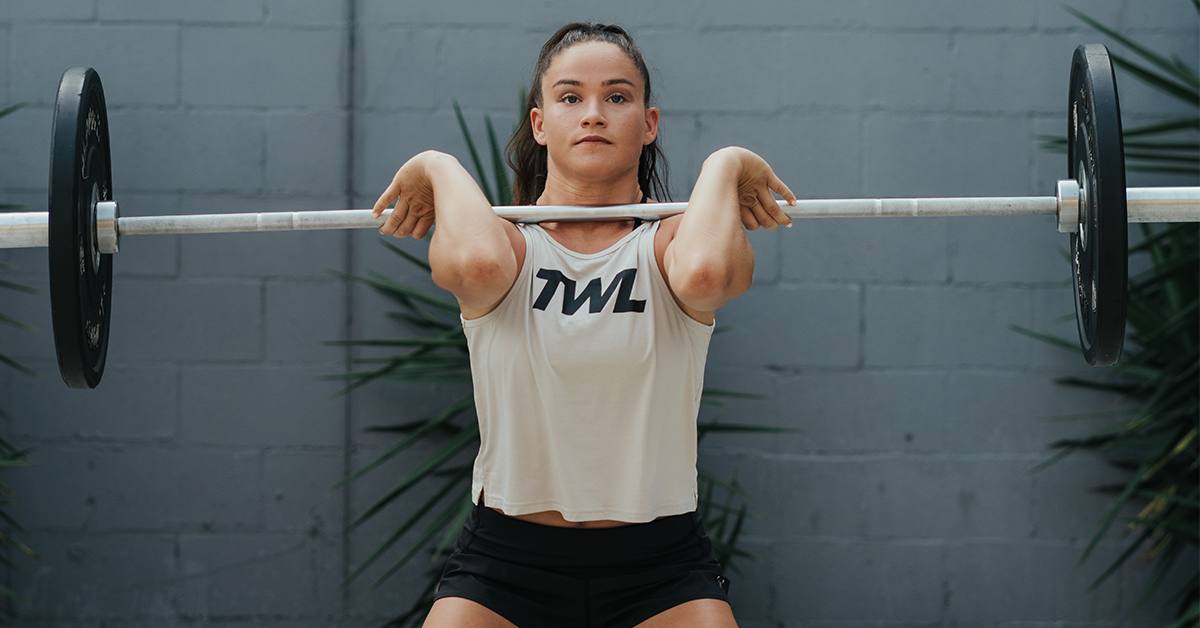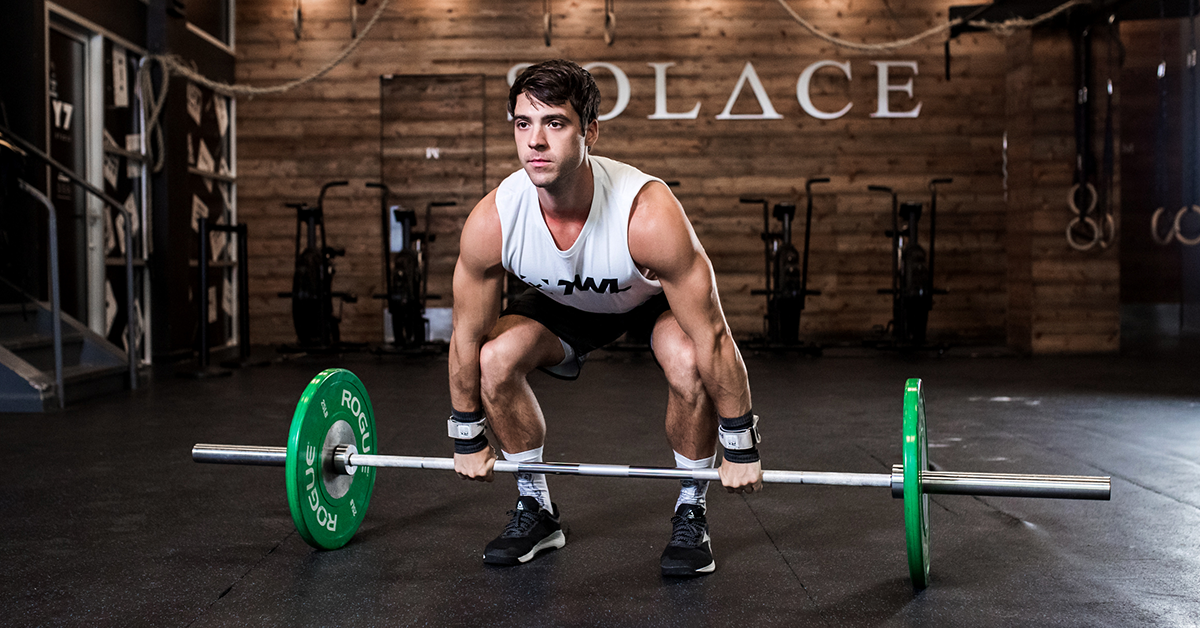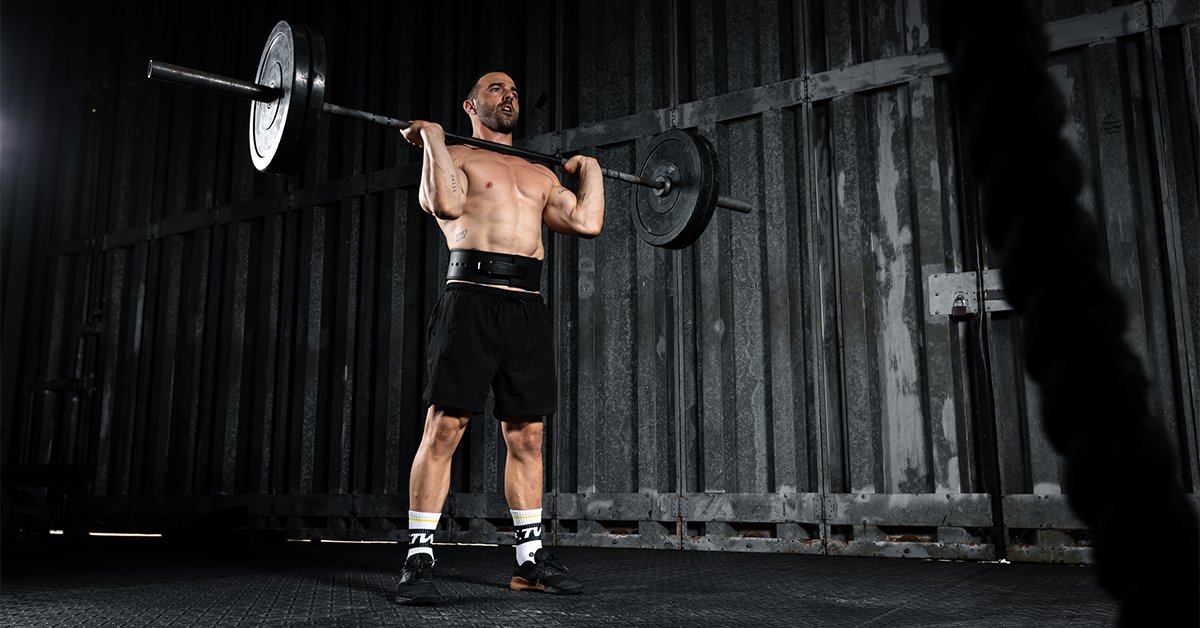As you make your way through your fitness journey, there’s going to be all sorts of new vocabulary you’ll learn. Maybe you’ve already been introduced to the clean vs power clean and thought, “How are these even different?” Furthermore, which one is better to train in the gym? Let’s talk about how the two lifts compare and contrast, how you’ll benefit from them, and which one is more important.
By the way, if you’re looking for detailed guidance on how exactly to perform the power clean, check out our ultimate guide to power cleans. And if you’d like help with your clean, read our beginner’s Olympic weightlifting guide to the clean!
Clean vs Power Clean: How are They Alike and Different?
The clean and power clean are alike because they have the same goal: Get the barbell from the ground to your shoulders. Here’s the difference, though. With a clean — sometimes called a “full clean” or “squat clean” — you ride the bar down into a full squat. For the lift to be a power clean, you must catch it in the power position, which means above parallel! In other words, you can squat, but your hips can’t go below your knees. If they do, it’s a clean.
In fact, the goal with power cleans is often to catch the bar as high as possible. This saves your quads from doing more work.
Here’s a clean. The athlete rides the barbell down into a full squat.
And here’s a power clean. Notice that when the athlete catches the barbell, his knees are indeed bent, but they are above his hips in height.
Aside from this one difference, the technique and form behind the clean vs power clean are nearly the same. The starting position is identical, the angles of your body remain the same, and you ultimately end in the same position: at full extension (meaning your body is straight), with the barbell on your shoulders.
Which Lift is Better: the Clean or Power Clean?
The short answer? Neither! As we’ve discussed, the two lifts are quite similar. They’re going to build total-body strength, particularly in the posterior chain, and they’re excellent opportunities to rehearse your form — like keeping the barbell close to your body. (Speaking of keeping the bar close, if you tend to scrape your shins, check out shin guards!)
But indeed, each one offers some unique benefits, making them just slightly different but equal.
One benefit of cleans is that you’re going to build a little more strength in your legs since it involves a full squat. You don’t need us to tell you that this is a great thing. Your legs can never be too strong. Plus, because a clean gives you more room to catch the bar (meaning you don’t have to worry about catching it high), most athletes tend to be able to clean more weight than they can power clean.
But that doesn’t mean that the power clean is to be dismissed. One benefit is that because there’s no squat, your quads won’t be as taxed. And as a result, if you add an overhead lift to this (like a split jerk), you’re going to find it easier. Additionally, it’s a smart move to practice power cleans if you have the tendency to dive under the barbell — a common mistake people make in the clean. The higher you can catch a barbell, the more weight you’re ultimately going to be able to lift.
Shop Now
So, Should You Train One More than the Other?
Yes and no. We’ll explain. Training both the power clean and clean is important because, as you now know, both lifts are incredibly beneficial and do offer a few unique benefits. However, if you’re struggling with something particular, you might find one lift more helpful to train than the other.
If you struggle with diving under the bar, you might consider placing more emphasis on the power clean.
If you struggle with standing up with heavier weights, try spending more time with the clean.
Shop Now
What are Some Clean and Power Clean Variations?
We’re so glad you asked! Don’t forget that there are countless ways to spice up your cleans and power cleans with challenging variations. For instance, you could slow down the clean pull. This builds strength off the floor and gives you an opportunity to practice form. You could also add a pause (or several) somewhere during the pull. For example, you can pause with the barbell an inch above the ground, at the knees, and/or at the hips.
Additionally, lifting off of blocks can seriously switch things up. This is going to cut the lift short, forcing you into that explosive third pull (at your hips) faster. In a sense, it mimics the hang clean. If you’re not familiar with lifting off of blocks, this is what it looks like:
If you don’t have blocks, you can also stack plates to mimic them. Just make sure the stacks are secure and stable.
When it comes to the clean vs power clean, without a doubt, you’re going to want to make time for both. Rehearsing the two lifts is going to be important to your progress as an athlete. If you have a specific weakness that warrants spending a little more time with one over the other, go for it! Along the way, be sure you’re protecting your body and positioning yourself for success with items like a weightlifting belt, knee sleeves, and finger tape. When it comes to all the essentials, we’ve got you covered. Shop our collections of equipment and gear today!

